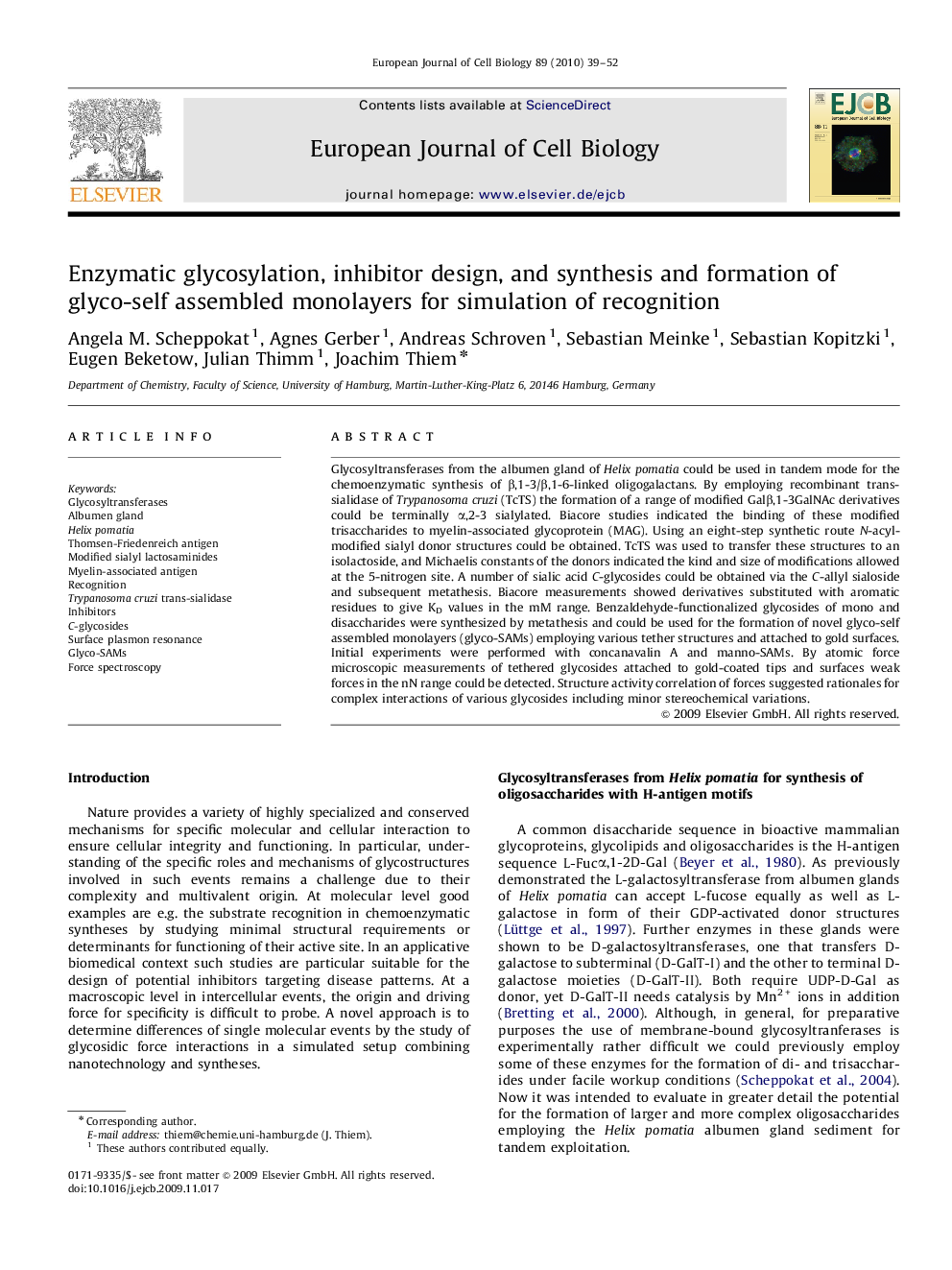| Article ID | Journal | Published Year | Pages | File Type |
|---|---|---|---|---|
| 2178847 | European Journal of Cell Biology | 2010 | 14 Pages |
Glycosyltransferases from the albumen gland of Helix pomatia could be used in tandem mode for the chemoenzymatic synthesis of β,1-3/β,1-6-linked oligogalactans. By employing recombinant trans-sialidase of Trypanosoma cruzi (TcTS) the formation of a range of modified Galβ,1-3GalNAc derivatives could be terminally α,2-3 sialylated. Biacore studies indicated the binding of these modified trisaccharides to myelin-associated glycoprotein (MAG). Using an eight-step synthetic route N-acyl-modified sialyl donor structures could be obtained. TcTS was used to transfer these structures to an isolactoside, and Michaelis constants of the donors indicated the kind and size of modifications allowed at the 5-nitrogen site. A number of sialic acid C-glycosides could be obtained via the C-allyl sialoside and subsequent metathesis. Biacore measurements showed derivatives substituted with aromatic residues to give KD values in the mM range. Benzaldehyde-functionalized glycosides of mono and disaccharides were synthesized by metathesis and could be used for the formation of novel glyco-self assembled monolayers (glyco-SAMs) employing various tether structures and attached to gold surfaces. Initial experiments were performed with concanavalin A and manno-SAMs. By atomic force microscopic measurements of tethered glycosides attached to gold-coated tips and surfaces weak forces in the nN range could be detected. Structure activity correlation of forces suggested rationales for complex interactions of various glycosides including minor stereochemical variations.
